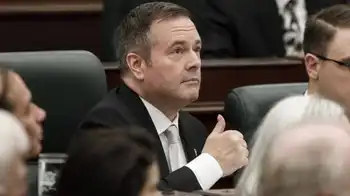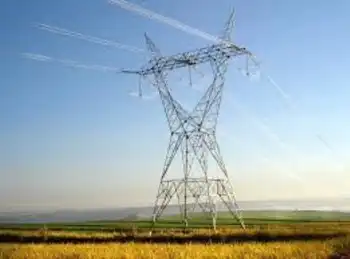EuropeÂ’s love of solar comes to America
If one day these machines become as common on the plains and rooftops of the United States as they are abroad, it may be because the financing technique that gave Europe an early lead in renewable energy is starting to cross the Atlantic.
Put simply, the idea is to pay homeowners and businesses top dollar for producing green energy. In Germany, for example, a homeowner with a rooftop solar system may be paid four times more to produce electricity than the rate paid to a coal-fired power plant.
This month Gainesville, Fla., became the first city in the United States to introduce higher payments for solar power, which is otherwise too expensive for many families or businesses to install. City leaders, who control their electric utility, unanimously approved the policy after studying GermanyÂ’s solar-power expansion.
Hawaii, where sky-high prices for electricity have stirred interest in alternative forms of power like solar, hopes to have a similar policy in place before the end of the year. The mayor of Los Angeles wants to introduce higher payouts for solar power. California is considering a stronger policy as well, and bills have also been introduced in other states, including Washington and Oregon.
“I’m seeing it with my own eyes — it’s really having a good effect on our local economy, particularly in these hard times,” said Edward J. Regan, the assistant general manager for strategic planning at Gainesville Regional Utilities in Florida. He said he had gotten calls from other cities and states since announcing the policy.
The new payment method is referred to as a “feed-in tariff” in Europe. It is, in essence, a mandate by the government telling a utility to pay above-market rates for green electricity.
It shifts the burden of subsidizing green energy from taxpayers, as is common in the United States, to electricity ratepayers. And the technique includes assurances that a utility will pay the high rates for a long period, often 15 to 25 years.
The surge of interest in the payment system is a recognition that despite generous state and federal incentives, the United States still lags far behind Europe in solar power. Germany, where feed-in tariffs have been in place since 1991, has about five times as many photovoltaic panels installed as the United States, though they still account for only 0.5 percent of electricity in that country.
In the United States, said Wilson Rickerson, a Boston energy consultant, “a lot of people simultaneously reached the conclusion — who’s moving fastest internationally? And that’s definitely been Germany and Spain.”
In Gainesville, the new policy has already sparked a rush to put up panels. John Stanton, a retired civil servant living there with his wife, put 24 solar panels on his roof in late January, as city leaders sped the policy toward approval. GainesvilleÂ’s municipal utility will pay Mr. Stanton and other homeowners and businesses who generate solar power more than twice the standard electricity rate, guaranteeing that rate for 20 years.
“It was the thing that sort of put us over the top,” said Mr. Stanton, who gained an appreciation of European energy policies after living in Italy for more than a decade.
Mr. Regan said that homeowners with panels received a payment under the new policy that works out to more than a 25 percent premium over the cityÂ’s other incentives, which include rebates and a more modest rate payment.
Wind power and other sources of renewable energy are generally included in the European payment systems, but solar — as one of the costliest renewables — has benefited the most. Payment rates in Europe for wind are substantially lower than for solar, according to Christian Kjaer, chief executive of the European Wind Energy Association.
In the United States, solar panels remain prohibitively expensive — a big reason that the panels account for far less than 1 percent of electricity generation. Generating power from the sun using rooftop panels can cost four times as much as coal, the largest and cheapest source of electricity in this country.
If a utility commits to paying a higher rate for renewable power over a period of years, it can offer those with solar panels or wind turbines a steady return that helps defray the initial cost of the equipment. “If you put your money in, you know you’re going to get it back,” Mr. Rickerson said, referring to Germany.
But requiring utilities to pay extra for green power has a direct impact on ratepayers. HomeownersÂ’ electricity bills will rise 74 cents a month in Gainesville, or about half a percentage point of the average homeownerÂ’s monthly bill.
“Seventy cents — what’s that? A Coke?” said Mr. Regan, of the Gainesville utility.
Opponents of feed-in tariffs like Marcel Hawiger, a staff attorney for the Utility Reform Network in California, say that the policy would hit poor people the hardest by raising their electricity rates because a relatively high percentage of their income goes to pay utility bills.
“Why should we use regressive taxation to support the most expensive form of renewable energy?” Mr. Hawiger asked.
The solar programs have sometimes proved so popular that costs can spiral out of control. Last fall, blockbuster growth forced Spain to cap the number of solar installations it would subsidize. Ontario, which has had a feed-in tariff since 2006, also suspended its program last year after being oversubscribed, but wants to restart the policy.
Even in Gainesville, homeowners wanting to put solar panels on their roof are now out of luck: a few days after introducing the policy, the city reached its cap on solar payments for this year and next. Meanwhile, a handful of utilities around the country are already doing similar things voluntarily, albeit on a tiny scale.
For now, at least, solar-power advocates do not believe they have the votes in Congress to adopt a national feed-in tariff system like the ones in Germany and Spain. They are putting their hopes, instead, on proposals in Congress to mandate that a certain percentage of electricity comes from renewables.
Related News

In a record year for clean energy purchases, Southeast cities stand out
HOUSTON - Cities around the country bought more renewable energy last year than ever before, with some of the most remarkable projects in the Southeast, according to new data unveiled Thursday.
Even amid the pandemic, about eight dozen municipalities contracted to buy nearly 3.7 gigawatts of mostly solar and wind energy — enough to power more than 800,000 homes. The figure is almost a quarter higher than the year before.
Half of the cites listed as “most noteworthy” in Thursday’s release — from research groups Rocky Mountain Institute and World Resources Institute — are in the region that stretches from Texas to…





